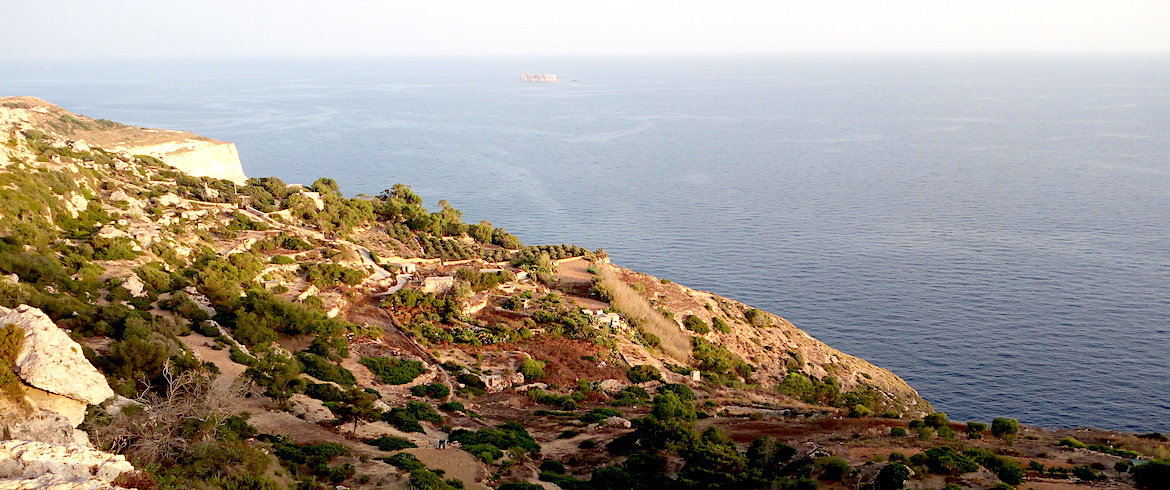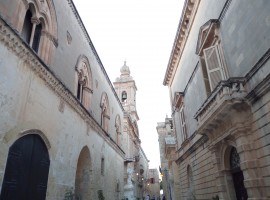A small and wild island, Malta has unique treasures: ancient cities of a moving beauty, spectacular backdrops populated with colorful fish, stunning cliffs and prehistoric temples. But also surreal landscapes, with small streets between stone walls and organic crops, hidden gardens, beaches, coves and submarine wrecks.

Here are 8 reasons to organize the next eco-friendly holiday in Malta:
1. Valletta overcomes cyclopic walls discovering breathtaking views and narrow streets that reach the sea
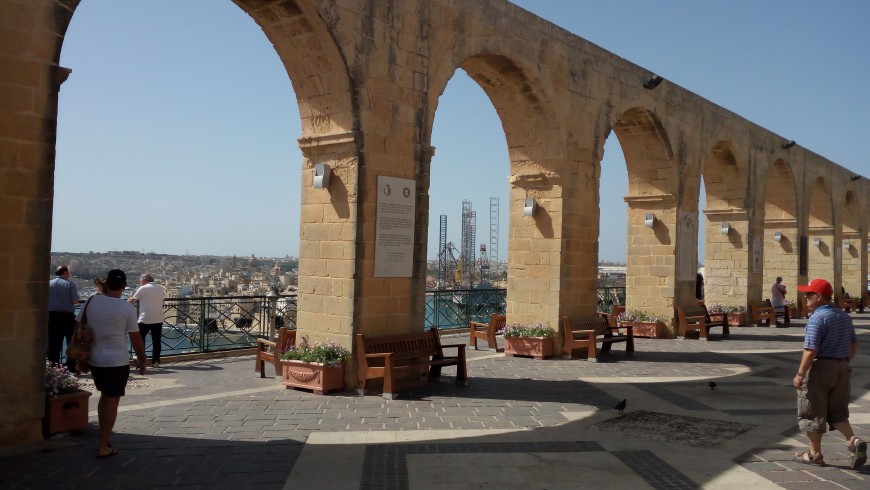
The capital of Malta is an extraordinary city. Unesco has defined it as “one of the world’s area with more history” and in 2018 it will be European capital for culture. Walking around the city’s cyclamen walls and going through the City Gate, the main door recently restored by Renzo Piano, you feel small in front of the beauty of Valletta. The city looks like a giant sculpture of golden stone and brings to mind the mythical ideal cities. Fully enclosed by very high walls Valletta occupies an area of only 1000 meters for 600 meters, where all the roads lead to the sea. Built by the Knights of St. John, who received the island from Charles V in the fifteenth century, it was to be an elegant and “gentlemen” city. It was thus the first designed European city with straight streets, shaded by golden stone buildings, positioned so that the fresh breezes of the sea passed. To protect the city, massive defensive walls were erected surrounded by a large moat. After passing City Gare you’ll be by the spectacular palace of Parliament, the work of the Italian architect Renzo Piano, made up of two huge stone cubes that seem suspended in the air, and which instead stand on pillars. The building is self-sufficient at the energy level, covered by a roof of photovoltaic panels that provide renewable energy. Immediately afterwards you can admire the Royal Opera House with the striking outdoor theater designed by Renzo Piano among the ruins of the old theater destroyed by a German air raid in 1942. The columns stand out in the sky between the theater sessions.
We head to the Upper Barrakka Gardens and stop in the colonnade gardens that dominate the Grand Harbor, created at the end of the 16th century as a place to relax the Knights of St. John. Even today it’s an oasis of peace with a breathtaking view of the sea and the city. We walk along a narrow alleyway with houses from the typical balconies and fruit groves that goes straight to the Valletta Waterfront. We see from above the clear sea and descending a few stone steps between the fishermen’s huts we get to the water by treating ourselves with a dip in the sea. Below us hundreds of colored fish. It seems to swim in an aquarium. Incredible because we are just a stone’s throw from the heart of Malta’s capital!
2. Discover secret gardens where nature enchants

The inhabitants of Malta are nicely extroverted, curious and friendly people. The waiter at the first bar where we stopped at lunch in the Marsaxlokk Square told us some anecdotes of his island and recommended some beautiful things to see by marking them on a map. One of these is the gardens of Sant Anton, or “Prince’s Gardens” at Attard. You will surely like it, he told us with a smile anticipating the green and freshness of that natural oasis. Malta is an island with very few trees and a small grove. The landscape is almost always deserted and bruised, made of low rocks and bushes. So the green and the wealth of Attard’s gardens look even more precious. Citrus fruits, avocado plants, high ficus, swan-ponds, birds of all kinds, walled flower-meadows. The gardens are open from 7am to 7pm and access is free.
3. Walk through the ivory streets and discover

The ancient capital of Malta is fascinating from afar, with its profile that stands out on the landscape, rising on a hill. We visit it at sunset, when almost everyone has gone and the narrow honey-colored narrow streets are almost deserted. We understand why it is nicknamed “the silent city“, the peace of this city where there is almost no car is almost surreal. You can take a ride through the streets of Mdina in karrozzin, a traditional horse-drawn carriage, or even better on foot. The ancient medieval city of Arab foundations, is surrounded by honey-colored walls, offers suggestive views over the surrounding area and is surrounded by an evocative atmosphere. The ancient moat has been transformed into a garden with almost surreal meadows, called ‘Mdina Ditch Garden’.
Every two years in Medina is held the Meina Cathedral Contemporary Art Biennale. If you want to stop for dinner we suggest the ‘Tea Gardens Fountain‘ a beautiful bar-restaurant on top of Mdina’s walls, with eye-catching views of the island.
4. You dive into an extraordinary sea

Everywhere the coast of Malta is strewn with beaches, coves, and spectacular sea views. Like the San Peter’s Pool, a natural pool made up of flat, white rocks on which to sunbathe. Or the cove isolated between the limestone cliffs of Fomm Ir-Rih, (which in Maltese means Windmill). Or the Golden Bay with finest golden sand beach.
The sea of Malta is beautiful for swimming: rich in large and small, colored and silver fish that move around you without fear. The sensation is really that of swimming in an immense natural aquarium!
Malta is also one of the best destinations in Europe for diving, with caves and beautiful underwater architecture. And even wrecks of ancient ships dating back to World War II.
5. Let yourself be enchanted by the Marfa Peninsula panorama from the Red Tower

Deep coastal scenery along with harsh and wild landscapes. The northwestern part of Malta will conquer you for its wild and authentic atmosphere. The Marfa Peninsula, which occupies the northwestern tip of the sea, offers a natural reserve, several walking routes, and an ancient fortified tower transformed into a museum to admire the scenery.
Arriving at Dahlet ix-Xilep, where there is a small isolated chapel, the sea views are lovely. From here starts a walking itinerary that winds for a kilometer along the coast. Here we also find an important naturalistic project funded by Europe. It is to protect a bird species that lives on this coast but is at risk of extinction due to the growing anthropic impact. In particular, the main dangers are represented by cruise ships and abandoned waste on the coast (there are incredibly many! There is still a lot to do about waste and waste collection in Malta!) and light pollution. We know Brigitte, a Scottish activist who participates in the project as a volunteer. she tells us that she is spending her weekend cleaning the coast off the rubbish but local people do not understand and ask her why she does it “since tomorrow you will find more waste.”
6. Walk high up the cliff at sunset

In the western part of Malta, there is an enchanting walk along the cliff. A scenic road winds through the small village of Dingli Cliffs along a spectacular 220 meter high cliff. In about twenty minutes’ walk you will reach the small chapel of St Mary Magdalene surrounded by an incredible landscape. It is the highest point of Malta and from here the view stretches from the coast to the small island of Filfla. Silence is filled only by the noise of the sea and the birds in flight. Sunset is the perfect time to visit this magical place.
7. Among fishermen and colorful boats
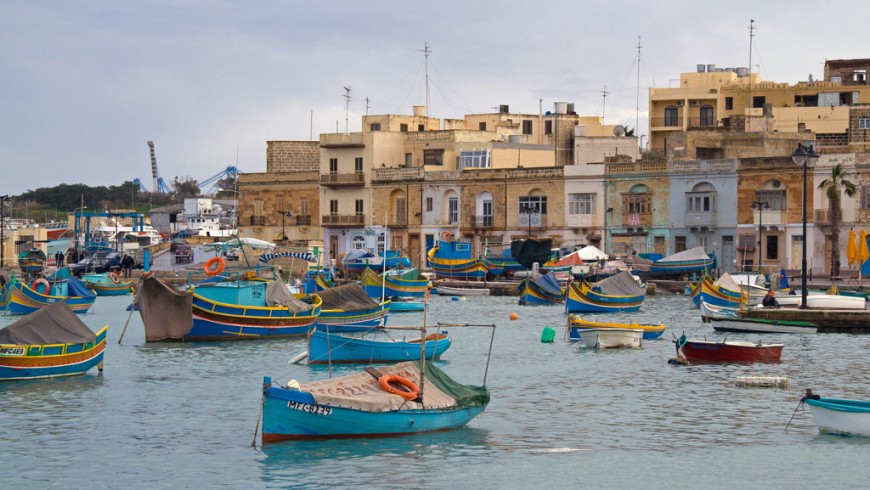
To experience the traditional Maltese life you have to visit the small village of Marsaxlokk, on the south east coast.
A row of ancient low houses embraces the promenade while colorful boats are moored in the harbor. Fishermen sitting on the dock repair the fishing nets or paint the boats. We find that this small village is Malta’s second natural harbor. Napoleon Bonaparte’s ship was moored here for a week during the French invasion of the eighteenth century. We also find that the color of the Maltese fishing boats with the watery eyes drawn on the skies is a legacy of the Phoenicians who colonized Malta in 800 BC.
8. Enter a mysterious temple, the oldest of the pyramids
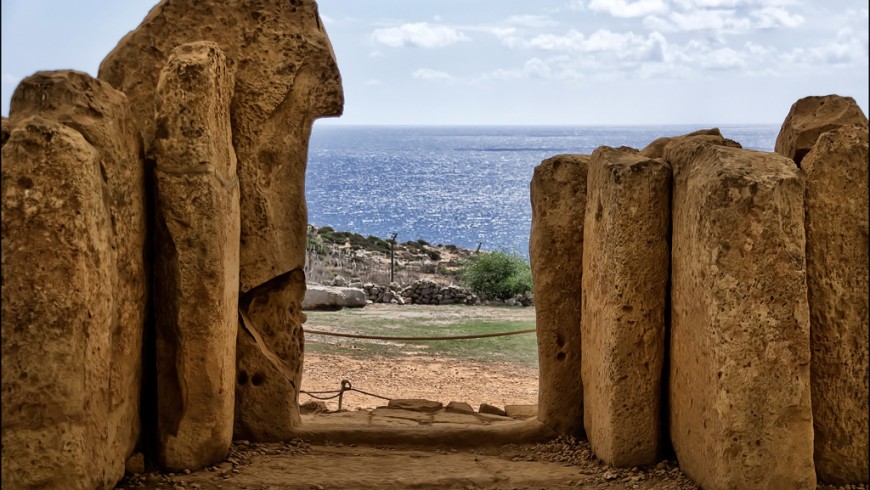
- Photo by M.Peinado via Flickr
- Photo by Chris Brown via Flickr
- Photo by M.Peinado via Flickr
Malta is rich in precious prehistoric testimonies. One of the most impressive is the temple of Hangar Qim and Mnajdra, which stand in a spectacular location on the top of a cliff overlooking the sea in the southeastern part of the island. The museum allows you to discover how these mysterious temples have been built (the function of these structures is still subject to debate).
Entering the series of oval rooms, they are fascinated by these stone architects, the first self-supporting structures in the world, even older than Egyptian pyramids!
Where to sleep:

If Gozo is rich in farmhouses, even organic, Malta doesn’t offer many green accommodations. We discovered a small B&B immersed in nature, near Mgarr, with an outdoor garden and breathtaking views of the surrounding landscape. The owner is Italian, moved to Malta for some years, a special place able to transmit positive energy! We appreciated the attention to the differentiated collection organic food for breakfast and menu local option, but also the suggestions of itineraries around.
To pack:
- Swim goggles and snorkel fins.
- European power adapter
- Satellite navigator (if you decide to move on the island by car or bicycle)
- Sunscreen, hat and sunglasses (if you visit Malta in summer)
